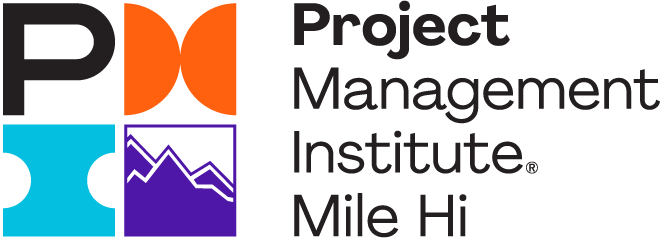21 August 2022 at 06:00PM
Realignment Realities
Things in projects can get out of whack so slowly that you don’t even notice. (Like the pain in my neck from hoisting my purse from my left shoulder for the past, um, many years.) Sometimes, changes happen fast, such as taking a spill on some ice. Changes occur in our bodies (don’t we know it!), careers, projects, and organizations we work for. Bringing things back into alignment takes thought, effort, and time. Fortunately, leaders in project management have the tools for the job.
Realignment is a project regardless of whether you’re changing your organization, your career, or your personal life.
Recognize the Problem
The first step is recognizing the problem. Misalignments can creep up so slowly that the symptoms almost become the new normal. Maybe your organization is no longer getting the outcomes it wants from projects. Or the job you once loved has become a burden. Working around the clock became normal to me, so I didn’t know what to do with a free weekend and didn’t notice my friends had stopped inviting me to do things.
Recognizing the problem maps to defining a project’s problem statement. People are good at pointing out symptoms. Projects aren’t delivering the outcomes we want. I hate my job. I work all the time. Like a doctor determining a disease based on the symptoms, you need to evaluate the symptoms to identify the problem that you need to address. Ask “What is causing these symptoms?” If you don’t know the answer, ask others for help.
Let’s use the example of projects not delivering the desired outcomes. To uncover the problem, you might interview stakeholders: management, end users, project team members, vendors. Ask questions such as “Are you not receiving outcomes or are the outcomes not what you expected?” or “What prevented you from delivering the desired outcomes?” and so on. Keep asking “Why?” until you get to the source of the problem. The source could be issues such as outcomes not defined clearly, ineffective communication among key stakeholders and project teams, or inadequate staffing for projects.
Take the Next Steps
Once you’ve found the problem, the next step is to make a plan to solve the problem. Realigning takes time, so the plan has to account for the challenges of organizational change or making personal changes in your life. Making adjustments feels weird at first. For example, fold your arms. Now, fold your arms again with the other arm on top. Now, imagine trying to get an entire organization to change the way it does things.
Empathy, compassion, and connection are crucial to success. Take the time to understand what the challenges are. How do you feel about the change you’re trying to make? What prevented success in the past? In an organization, dig deep to uncover the many perspectives people might have. And find out what will motivate them to embrace the changes. Build this into your plan.
For example, suppose your research identified inadequate project staffing as the problem. The solution selected is to create a process for prioritizing projects based on the capacity of the resources. The project team members’ perspective is that they are assigned to too many concurrent projects. Line managers say that they don’t have enough resources with needed skills to properly fulfill all the project requests. Management’s view is that there are many critical projects, and project failure is putting the company in jeopardy. The financial department presents numbers that back up management’s view.
In this example, you might focus on making sure that line managers and team members contribute to the realignment effort, maybe helping to develop a mechanism for documenting resource skills and capacity. On the other hand, management might help by identifying the criteria and values they use to select projects.
Evaluate Along the Way
Fortunately, realignment gets easier as you work on it. But the beginning can be rough. Have you ever beaten yourself up when you backslide into an old habit? That isn’t helpful with yourself or with others. That negative judgment can make you or an entire team give up and fall back into the old ways.
These types of changes take consistent, mindful practice. In addition, you need to evaluate results often and focus on lessons learned. If you’re working on something personal (let’s say working too hard), think about your goal and why it’s important. Then, evaluate your results. If you fell short, are you judging yourself? Take a step back and ask yourself what you’ve learned and what you can do differently in the future. If you’re doing well, celebrate in some positive way.
For an organizational realignment, you need time for lots of things: adjusting to the changes, working with people, evaluating results, tweaking the approach, and celebrating when things start to turn around.
Regardless of the context of a realignment, planning, listening, and management support are keys to success.
Additional Resources
PMI Mile Hi chapter picked the theme of "Realign" as part of the focus of our 2022 Women in Project Management Leadership summit. If you did not get a chance to register for the event, you can still purchase a post-event video pass to view the on-demand recordings of the three WPML speaker presentations. Sign-up through the Oct. 6, 2022, calendar event.
Interested in learning more about topics like this one? Check out upcoming events on our chapter calendar. Sign up for one of our upcoming meetings, roundtables, or workshops – a selection of which are virtual. Earn your PDUs through PMI Mile Hi Chapter!
About the Author
In addition to training courses and books, Bonnie Biafore offers project management tips and education through several online sources: her blog (http://www.bonniebiafore.com/blog/), LinkedIn (https://www.linkedin.com/in/bonniebiafore/), weekly newsletter (https://www.linkedin.com/newsletters/bonnie-s-project-pointers-6767151075767197696/), and LinkedIn Learning (https://www.linkedin.com/learning/instructors/bonnie-biafore).



